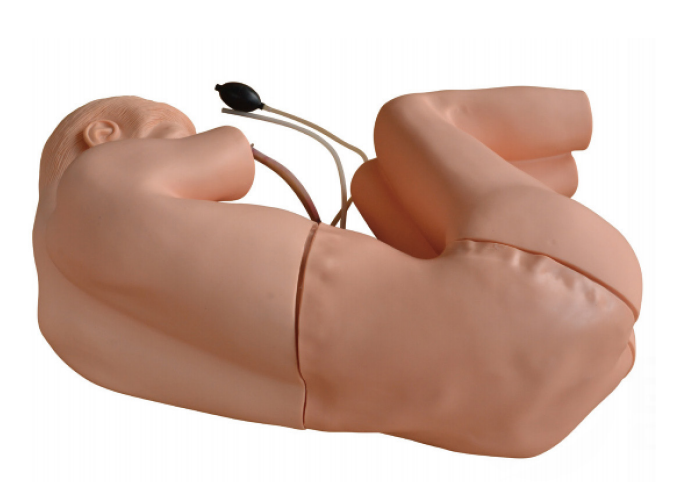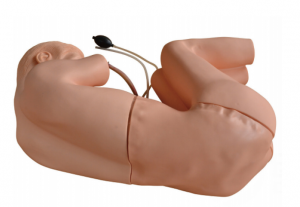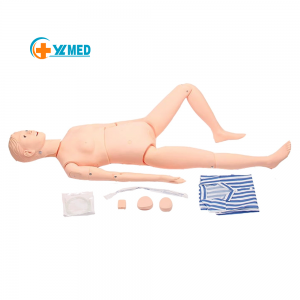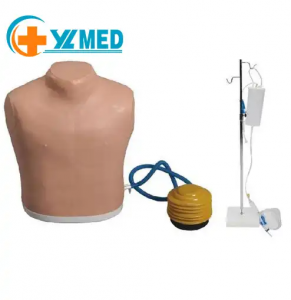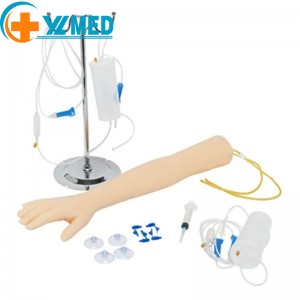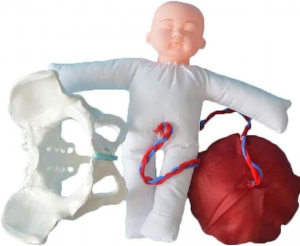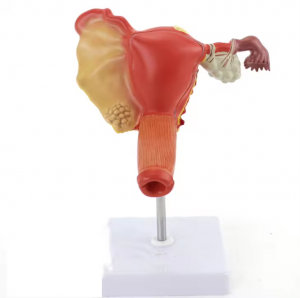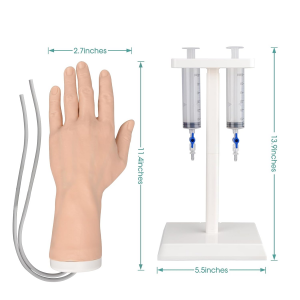Lumbar puncture simulation standardized patient model
Lumbar puncture simulation standardized patient model
Functional features:
1. The simulated standardized patient was placed in a lateral position, with the back perpendicular to the bed, the head bent toward the front chest, the knees bent toward the abdomen, and the torso arched.
2. The waist can be moved. The operator holds the simulated patient’s head with one hand and the popliteal fossa of both lower limbs tightly with the other hand. The spine can be kyphotic as far as possible to widen the vertebral space and complete the puncture.
3. Accurate waist tissue structure and obvious body surface signs: There are complete 1 ~ 5 lumbar vertebrae (vertebral body, vertebral arch plate, spinous process), sacrum, sacral hiatus, sacral Angle, superior spinous ligament, interspinous band, ligamenta flandum, dura and omentum, and the subomentum, epidural space, sacral canal, posterior superior iliac spine, iliac ridge, thoracic spine process, and lumbar spine process formed from the above tissues can be truly palpated.
4. The following operations are feasible: lumbar anesthesia, lumbar puncture, epidural block, caudal nerve block, sacral nerve block, lumbar sympathetic nerve block.
5. The simulated reality of lumbar puncture: When the puncture needle reaches the simulated ligamentum flavum, the resistance increases and there is a sense of toughness; when the puncture needle breaks through the ligamentum flavum, there is an obvious sense of disappointment, that is, it enters the epidural space and has negative pressure, and liquid is injected to simulate epidural anesthesia; Further insertion of the needle will puncture the dura and the omentum, and there will be a second feeling of frustration, that is, entering the subomentum space, there will be simulated cerebrospinal fluid outflow, and the whole process will simulate the real situation of clinical lumbar puncture.
Packing: 1 piece/box, 77x62x33cm, 13kgs



- Accurate waist tissue structure and obvious body surface signs: complete 1 to 5 lumbar vertebrae (vertebral body, vertebral arch plate, spinous process), sacrum, sacral hole, sacral angle, supraspinous ligament, interspinous ligament, ligamentum flavum, hard spine Membranes and bead reticulum, as well as the subdural reticulum, epidural space, and sacral canal formed by the above tissues; the posterior superior iliac spine, iliac crest, thoracic spinous process, and lumbar spinous proc
- The following operations are possible: lumbar anesthesia, lumbar puncture, epidural block, caudal nerve block, sacral nerve block, lumbar sympathetic nerve block.
- Human life-size simulation lumbar puncture medical model. This model is: 1: 1 ratio of the body, elasticity, accurate human anatomy. The simulated standardized patient is placed ilateral position, with the back perpendicular to the bed surface, the head bent forward to the chest, the knees flexed to the abdomen, and the trunk is arched.
- The waist can be moved. The operator needs to pull the patient’s head in one hand and hold the lower limbs at the popliteal fossa with the other hand, so that the spine can be kyphosis and widen the intervertebral space to complete the puncture.
- Lumbar puncture simulation is real: when the puncture needle reaches the simulated ligamentum flavum, the resistance increases and there is a sense of resilience; the breakthrough of the yellow ligament has a clear sense of emptying, that is, it enters the epidural space and there is negative pressure (at this time, the injection of anesthetic liquid It is epidural anesthesia); continue to enter the needle will pierce the dura mater and the bead omentum, a second sense of emptying occu



